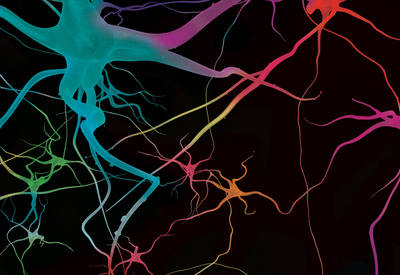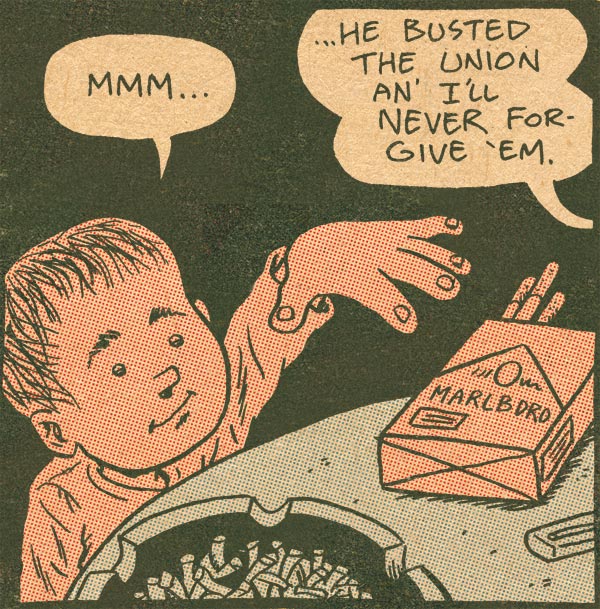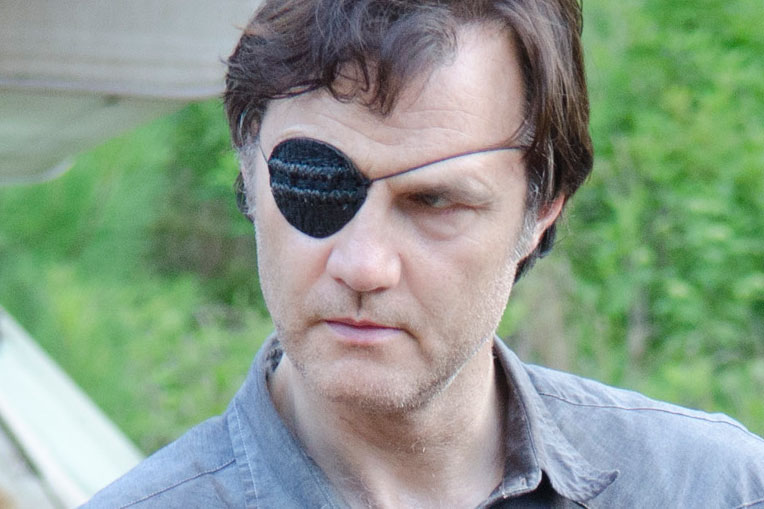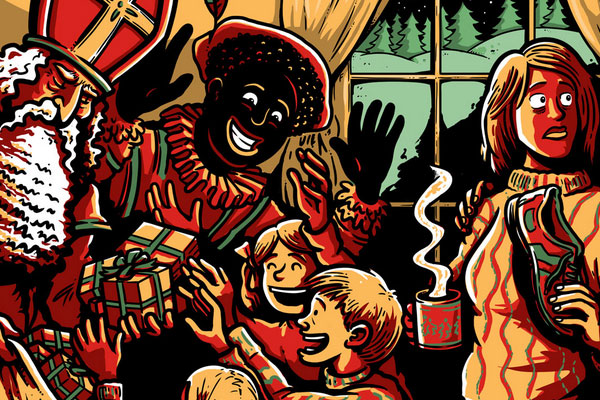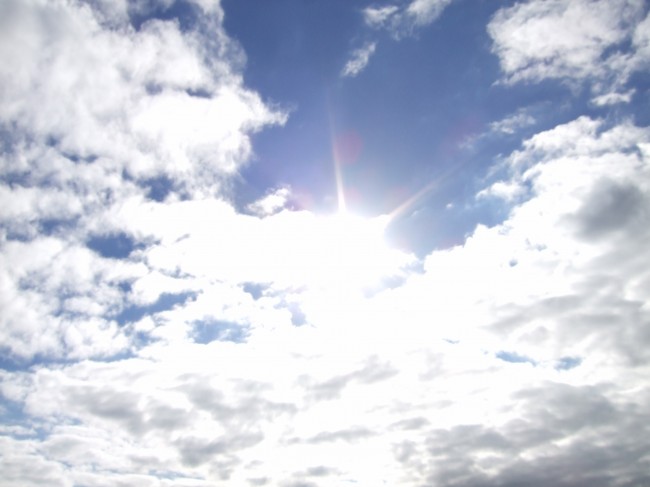Just before dusk, 18 strangers entered a yurt on a Midwestern homestead. Peruvian tapestries decorated the walls of the large, round structure, and rattles stood poised for ceremony.
The participants — professional men and women ages 35 to 65 — put on comfortable clothing and set up sleeping bags, pillows, and blankets. Everyone got a plastic bucket, cheerfully colored in green, red, or blue.
"It looks like a big pajama party," joked the host, Kim.

Emily Utne
In a greenhouse at the University of Minnesota, Dennis McKenna tends to one of two key plants used to prepare ayahuasca

Emily Utne
The leaves of the Banisteriopsis vine

Luis Eduardo Luna
Two men brew up a pot of ayahuasca in Iquitos
The shaman, a North American who had trained in
South America for more than a dozen years, took a seat at the front and led the group through a conversation about what to expect.
Stay with your breath, he advised. There's no talking, no touching. Purging in any direction is a distinct possibility. The bucket is your friend.
He dimmed the lights, and after intoning a prayer, poured a foul-smelling brown liquid into a series of cups. One by one, all 18 visitors brought it to their lips and drank.
For 40 minutes, the yurt fell silent. Then the shaman began to sing.
Around the same time, the drink took effect. Some who consumed it cried, others belched, several fled for the outhouse. Many reached for their buckets and vomited.
For the next four to five hours, those in the room did what many call "the work." Some took trips back into their childhood memories. Others had visions: of nature, of healers, of fireworks. Afterward, they would say that the tea offered an opportunity to look at their problems in a new light.
"It was one of the most beautiful experiences of my life," says Fred, a kind-eyed, gray-bearded man in his 50s.
Kim and her husband, Josh, have organized about 50 of these gatherings since the summer of 2010. In that time, they've seen hundreds of people have an experience like Fred's.
All three asked that their real names not be used out of fear of the law. Though no one in the United States' underground network has yet been prosecuted, the liquid falls into the category of Schedule I controlled substances.
The risks scare her, but the way Kim sees it, she doesn't have a choice.
"My life is not my own anymore," Kim says. "If that were to mean standing up in the face of legal action, I'd do it.... After seeing how much this helps people — truly heals people — I'd do anything."
The psychoactive brew goes by many names.
William Burroughs and
Allen Ginsberg called it Yage. In Brazil, it's known as Hoasca. Other aliases include the Spirit Vine, the Vine of the Soul, and the Vine of the Dead.
Its most common name is ayahuasca. The indigenous cultures of the Amazon have brewed the plant concoction, and its naturally occurring dose of the hallucinogen DMT, for centuries.
Some of the same doctors and researchers who have, in recent years, gotten
FDA approval for breakthrough studies involving MDMA and psilocybin mushrooms are now turning their attention to ayahuasca. Preliminary work suggests the brew could help treat depression, chronic addiction, and fears of mortality.
People with less-defined diagnoses, but a hunger for something missing, say ayahuasca offers something ineffable: compassion, connectedness, spirituality.
"Ayahuasca is penetrating American society, and its highly successful people, way more than any other psychedelic," says
Rick Doblin, the head of MAPS, the
Multidisciplinary Association for Psychedelic Studies, a nonprofit research association based in
Santa Cruz, California. "The number of people who have had incredible experiences with ayahuasca, if they could all surface in the public sphere at the same time, it would be absolutely astonishing."
In a greenhouse at the University of Minnesota,
Dennis McKenna walks past the cacao (chocolate) and the Punica (pomegranate), and strides straight to the back corner, where the vines of the plant Banisteriopsis have twisted around each other — and nearby electrical cords — to reach the room's rafters.
McKenna, a white-bearded professor wearing wire glasses and a denim shirt tucked into his jeans, points at one of the younger vines, a supple green stem the width of a pencil.
"This is nothing," he says, explaining that mature plants can reach 1,500 feet and weigh several tons. "Usually, the part you use is the thickness of a finger."
McKenna would know: He has drunk ayahuasca several hundred times since 1981. An ethnobotanist and ethnopharmacologist by trade, McKenna first tangled with psychedelics as a teen coming of age in the '60s. He tried everything from LSD to jimson weed, but never ayahuasca: There was none.
"It was this rare, legendary thing," McKenna remembers.
The first record of ayahuasca arrived in the West in 1908, thanks to the British botanist
Richard Spruce, who mostly described lots of vomiting.
Harvard ethnobotanist
Richard Evan Schultes followed up a half-century later with the first academic account. Around the same time, Beat author William Burroughs wrote letters depicting his quest for the tea to Allen Ginsberg, collected in 1963 as
The Yage Letters. But in the Western literature, there wasn't much more than that.
"There was nothing," says McKenna.
Seeking to change that, McKenna embarked on his first trip to South America at age 20. A decade later, he returned, this time to research his dissertation. After months in the jungle, he brought plant samples back to his lab, where he showed for the first time how ayahuasca works.
To make the brew, shamans boil together two Amazonian plants for many hours, sometimes days. As they simmer, the DMT contained in one of the plants mixes with the other one, the Banisteriopsis vine, and its key ingredient: monoamine oxidase inhibitors, or MAOIs. Normally when people ingest DMT — a not-uncommon compound in nature — the monoamine oxidase in our gut knocks it out. But the Banisteriopsis allows the hallucinogen to reach the brain.
By the middle of the 20th century, several Brazilian churches splintered off from the shamans and took ayahuasca into a formal setting. In 1991, one of these — a group called the Uniao do Vegetal, or UDV — invited McKenna to one of its twice-monthly ceremonies, during which the tea is administered as a sacrament. (A New Mexico-based branch of the church won a 2006 Supreme Court case allowing them to use ayahuasca in their ceremonies.)
In a room with 500 other people, McKenna drank first one cup, then a second, and was plunged into one of the most vivid ayahuasca visions of his life: a molecule's-eye view of photosynthesis, or as he explains it, "the force on which life depends."
When McKenna returned to his body, he writes in his new book,
The Brotherhood of the Screaming Abyss, "I knew that I had been given an inestimable gift."
McKenna began devising a study to look at the biomedical effects of ayahuasca, and within two years, he was back in Brazil. On this trip, he brought along a team that included
Dr. Charles Grob, a psychiatrist who heads the Division of Pediatric and Adolescent Psychiatry at UCLA's medical school.
"Nowadays, the word is out," Grob says. "But when we did this, I'd say, 'We're doing an ayahuasca study,' and people would say, 'aya-what-sca?'"
For about a month in the summer of 1993, the team of the Hoasca Project ran tests on 15 randomly selected members of the UDV church, all of them men who had been using ayahuasca regularly for at least 10 years. The scientists ran the same tests on similarly aged men who had never been exposed to ayahuasca.
The researchers measured every biological metric they could think of — blood pressure, heart rate, pupil dilation, body temperature — and used structured psychiatric interviews to get where their instruments couldn't: inside the participants' minds.
Many of the men had struggled with alcoholism and depression prior to joining the church, Grob learned. They credited ayahuasca with transforming their outlook. "In some cases," Grob says, "they felt like it had saved their lives."
When the researchers left Brazil and started processing their data, the blood work came back with one of the project's most startling discoveries: The long-term ayahuasca users showed higher levels of the transporters of serotonin, the brain chemical that regulates mood.
"That's the target that antidepressants work on, and here it was significantly elevated in the drinkers," McKenna says.
Deficits in serotonin transporters are also connected with problems like alcoholism and depression — the same issues the 15 subjects said the ayahuasca had helped cure.
"Here we have a medicine that apparently reverses these deficits, something no other medicine is known to do," explains McKenna. "And there's also a correlation to behavioral change. You can't say it caused it, but there's definitely a correlation."
Today, 20 years after the study, McKenna is preparing to revisit the findings. Within a year, he aims to raise enough money to fund a new study, this time in
Peru, to look at the effects of ayahuasca on people with PTSD.
He hopes that additional research will help him establish his ultimate goal: a destination medical clinic in Peru.
"If we can bring together the best of shamanism and the best of psychotherapy, I think we can offer a new paradigm for healing," says McKenna. "What we're really trying to do here is revolutionize psychiatry."
Lisa Yeo doesn't look like a junkie. The 47-year-old has shimmering blond hair and clear skin, and wears a stylish tangerine shirt. It's Halloween, and her two dogs — a Shih Tzu and a Dachshund — yap incessantly as kids come to the door.
Just eight years ago, she weighed 80 pounds and was missing her two front teeth.
Yeo's father gave her her first alcoholic drink at age six, and she was drinking alone by age 11. As a teen, she developed a cocaine addiction, and in her early 20s, she set out on a path that would take her to heroin, crack, and prostitution.
On August 11, 2005, as cops walked her out of a hotel where they had found her shooting up, Yeo realized she was finally ready to change.
She went to rehab for a year, then a recovery house for another two years. But she still wasn't totally sober: For 18 years, she'd been receiving a court-ordered dose of the opiate substitute
methadone. Now, she wanted off all drugs, once and for all.
As Yeo reduced her dose, her body started breaking down. Doctors told her that quitting the methadone was dangerous, and advised her to just accept it as a fact of her life. To Yeo, the thought of staying on methadone was unbearable, and she began contemplating suicide.
Then she heard of a famous Canadian addiction specialist,
Dr. Gabor Mate. Yeo set up a meeting.
"I told him this big long story, and at the end of it, he said, 'Lisa, I think I can offer you a potential way out of this,'" Yeo remembers. "It was just like, really?"
First, Yeo spent a summer at a treatment clinic in Mexico, where she used other traditional plant medicines, iboga and ibogaine, to help wean her body off opiates. By October 2012, Yeo was ready for step two, and boarded another plane to Mexico, this time for a week-long ayahuasca retreat.
The night of her first ceremony, Yeo walked onto a round platform with a roof open to the jungle around it. Not long after she drank – "it tasted bitter, but it didn't taste as bad as some of the things I'd ingested in my life" — Yeo began to feel something prodding at her liver, damaged by hepatitis C.
"I felt what I thought of as a vine going into the area where I had the pain, and circle, circle, circle," Yeo remembers. "Then there would be this release, and the pain would be gone."
The night of the second ceremony, Yeo's experience shifted: This time, she saw a slideshow of people who had shown her kindness, "babysitters to social workers to prison guards," Yeo remembers. "It was like flash cards, and at the very end was my mom."
Yeo has since done a second ayahuasca retreat with Mate, and credits the vine with helping her discover who she is without substances.
"It has given me a go-to place of safety, and a knowing of how to be gentle with myself when any tormenting thoughts creep in," Yeo says. "It just lifts the trauma, it lifts the pain."
Treatment for addiction disorders is one of the most promising areas of therapeutic ayahuasca use, in part because doctors still don't have many other good options.
"Someone walks in your office today, you're going to basically say the same thing your predecessor might have said 50 or 60 years ago, which is, 'Find a 12-step group, and if you're lucky and it's a good fit, maybe it will help,'" explains Grob. "Otherwise, we don't have a whole hell of a lot to offer."
The psycho-spiritual experiences that ayahuasca provides — "like a mystical-level state," Grob says — seem to offer an effect similar to that of certain faith-based aspects of 12-step groups: showing addicts that there is a power greater than themselves.
When Mate first heard of ayahuasca, he had recently published his book on addictions, In the Realm of Hungry Ghosts. People kept writing him, asking if he knew about "this weird plant," Mate remembers. Eventually, he decided to try it himself.
During his first retreat, Mate saw the connection to treating addiction right away.
"The ayahuasca experience just dissolved my defenses," he says. "I experienced a deep sense of love, tears of joy racing down my face."
Mate began organizing retreats of his own. He brought in shamans to lead the ceremonies, and used his own training to help participants prepare for, process, and integrate what they experienced.
"It's not a question of, 'Here's a drug that's going to fix you,'" Mate explains. "It's, 'Here's a substance under the effect of which you'll be able to do a kind of self-exploration that otherwise might not be available to you, or otherwise might take you years to get to.'"
In 2011, a Canadian First Nations community contacted Mate to treat some tribe members with chronic substance-dependence problems. Mate agreed, and in June, arrived at a remote village for the first of two retreats. A team of researchers, led by the addiction specialist
Dr. Gerald Thomas, came along.
Since Grob and McKenna's study in 1993, some limited research had been done on ayahuasca: Scientists had performed brain scans of ayahuasca users, and administered freeze-dried ayahuasca in a lab. But no one had followed up on ayahuasca's therapeutic potential. Thomas and his team were ready to continue the work.
The group set up in the tribe's longhouse, a spacious wooden structure with a stove in the middle and straw on the floor. Twelve members were participating in the first ceremony, and that night, before they drank, Mate led them in conversation about their addictions.
"When they were talking about trauma, for many of them, that was the first time they ever shared that with anybody," Mate says. "They were entering into deep pain."
Before the retreat, Thomas and his team administered psychiatric evaluations to measure the 12 participants on factors like hope, quality of life, mindfulness, and emotional regulation. After the ceremony, researchers repeated the tests — first two weeks later, then four weeks, then once per month for half a year.
The results, which they published in June in the journal Current Drug Abuse Reviews, came back promising. Alcohol, tobacco, and cocaine use decreased among the participants. On the psychological surveys, the subjects' quality-of-life scores increased, as did the ratings for mindfulness, empowerment, outlook, and hopefulness.
At the six-month mark, the team also interviewed 11 of the study participants, and asked them to rate the experience on a scale from 1 to 10. The mean response came back at 7.95. One 30-year-old man told the researchers, "With my last experience with the ayahuasca, I really faced myself. Like, my fear, my anger. Which really, I think is a big part of my addictions.... I wish I was introduced to it like 20 years ago. It could have saved me a lot of time and trouble."
The city of Iquitos, Peru, is a boomtown in the Amazon Basin. In 2012, 250,000 visitors traveled through the once-sleepy inland port. One of the main draws: ayahuasca tourism.
Today at the Iquitos airport, travelers are as likely to be offered ayahuasca — or at least canisters of a dubious brown liquid — as a taxi. The stuff so thoroughly permeates the city that a
New York Times travel dispatch from September opens, "Before we begin, a disclaimer: In Iquitos, Peru, your correspondent did not consume the shamanic hallucinogen ayahuasca."
The influx of tourists seeking transcendence has brought with it new problems. When
Joshua Wickerham, a sustainability consultant, was invited to a conference on psychedelics in Oakland, California, this April, he got an earful.
"The people in the ayahuasca community were talking about all of these issues, as ayahuasca is becoming this global phenomenon," Wickerham recalls. "There were so many people from so many walks of life saying, 'There is so much good happening here, but there are also real problems.'"
An idea was born: a kind of
TripAdvisor for ayahuasca centers. In early November, Wickerham launched the
Ethnobotanical Stewardship Council as a nonprofit devoted to assuring the sustainability and safety of traditional plants like ayahuasca. Wickerham envisions the ESC developing, with the community's input, into a consensus certification model.
"I think the ESC can help educate the seekers," Wickerham says, "so there's some way to differentiate when there's a neophyte who lands at the Iquitos airport and asks the cab driver, 'Where should I go for ayahuasca?'"
As far as psychedelics go, studies show that ayahuasca is on the relatively safe side. For it to be lethal, a user would have to take about 20 times more than the standard ceremonial dose. (For alcohol, that number is 10 times more than a normal serving.) Brain scans of ayahuasca users indicate that the brew doesn't have a neurotoxic effect.
"The kneejerk reaction is to say, 'Oh, it's a dangerous hallucinogen,' but look at the actual mortality rate," says McKenna. "If you look at the number of people who die from adverse reactions to aspirin, ayahuasca is considerably safer."
The main risks are psychological. "That's where a good shaman comes in," says McKenna.
But in the Wild West that is Iquitos, it can be hard to tell which shamans are the real deal. Some serve a counterfeit brew laced with the witchcraft-associated plant known as toé. Others have impure intentions.
In the ayahuasca community, there's a collection of well-known horror stories: the German woman who returned from Peru with a report of being sexually assaulted by her "shaman." The two French citizens who died during their trip — one from a heart attack, the other from a likely interaction with his prescription medications. The worst, though — the story held up as a warning to those who seek blindly — is the story of an 18-year-old Californian named
Kyle Nolan.
Nolan set out for the
Shimbre Shamanic Center, a Peruvian ayahuasca lodge run by a shaman calling himself Mancoluto, in August 2011. When Nolan never showed up for his flight home, his worried parents went to Peru to find him. First, Mancoluto claimed that Nolan had taken off in the middle of the night, but his body was later found in a grave on the center's property.
To Wickerham, stories like this illustrate why the ESC is necessary. He hopes to work with the governments of countries like Peru and
Ecuador to show them that they don't have to resort to heavy-handed regulatory legislation — that the community can monitor itself.
"I hope we can prevent another tragedy."
When Dr. Brian Rush started a crowdfunding campaign for ayahuasca research, he didn't know what to expect.
The campaign for ATOP — the Ayahuasca Treatment Outcomes Project — launched on Indiegogo in August 2013. By the time it closed in October, Rush and his team had raised $34,000 from 450 people. Some of them, Rush says, had personal experiences with ayahuasca; others had been touched by addiction; still more were simply intrigued.
Most interesting of all was the support from doctors.
"I got notes from physicians and psychiatrists in the U.S. and Canada who have been using ayahuasca under the table in clinical practice, and really support this work," says Rush. "I don't think I expected that."
Rush, an addiction researcher with a doctorate in public health, first heard of ayahuasca in 2011 and decided to travel to Peru to learn more. He checked into an ayahuasca center called Takiwasi, and during a ceremony, confronted his 20-year addiction to nicotine.
"I was laid flat out in a coffin and my three children were standing around me," says Rush. "Then I started purging, and it felt like I was purging the tobacco poison."
Not long after Rush returned home, he gave up smoking for good.
"I had quit before, but this time was different," he says. "It's like I have no memory of smoking. I don't have any tactile memory in my hands. That was a year and a half ago, and I haven't had a cigarette."
Having studied addiction science for 30 years, Rush asked the Takiwasi center what data it had. The answer was: not much. When he realized that other, similar programs also lacked decent evaluation data, he decided to change that.
"I said, 'I am in your service,'" he recalls.
The Indiegogo campaign funded the project team's first planning meeting, the kickoff of a study that will be several years long. The meeting took place in Peru at the end of October, and brought together 40 international researchers to help design the project.
They decided that ATOP will be an umbrella over studies in several South American countries, each looking at ayahuasca in the treatment of drug and alcohol abuse. By the end, the researchers hope to have definite answers on whether addicts treated with ayahuasca see a verifiable reduction in alcohol and drug-related harms.
"It's real clear that all we have now is kind of anecdotal evidence, and small studies with short-term follow-up," says Rush. "This is a potential approach that a lot of people have some confidence in, and at least enough confidence to say, 'We need more studies. We need to know more.'"

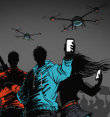 I write books. My latest is a YA science fiction novel called Homeland (it's the sequel to Little Brother). More books: Rapture of the Nerds (a novel, with Charlie Stross); With a Little Help(short stories); and The Great Big Beautiful Tomorrow (novella and nonfic). I speak all over the place and I tweet and tumble, too.
I write books. My latest is a YA science fiction novel called Homeland (it's the sequel to Little Brother). More books: Rapture of the Nerds (a novel, with Charlie Stross); With a Little Help(short stories); and The Great Big Beautiful Tomorrow (novella and nonfic). I speak all over the place and I tweet and tumble, too.

